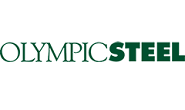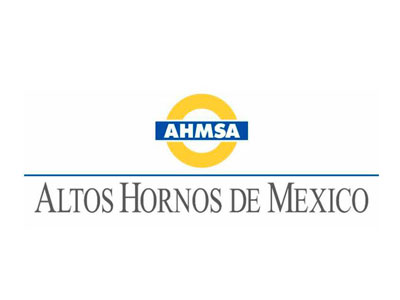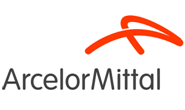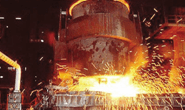Steel Mills

Olympic CEO Bullish on Demand Despite "High-Wire Act" of Prices
Written by Michael Cowden
January 22, 2021
Olympic Steel’s chief executive officer is bullish on steel demand in the months ahead despite the risks posed by higher prices.
That optimism stems from the Biden administration indicating that it plans to spend big on infrastructure and from the prospect of the U.S. getting a better handle on the Covid-19 crisis, Olympic Steel CEO Richard Marabito said in an exclusive interview with Steel Market Update.
It also comes from the ability of the service center industry to adapt to any surprises that might come its way–and with leaner inventories than in past pricing cycles, he said.
“I think we saw a pretty good recovery into the fourth quarter post-Covid, and we are starting out the year pretty similar to what the demand trends were in the fourth quarter,” Marabito said.![]()
In most years, that might not be much to boast about. But the fourth quarter of 2020 was not a normal quarter. And December, which tends to be a slow month for service centers, last year saw strong shipping volumes, he noted.
But high prices mean that everyone in the metals supply chain is watching for any cracks and planning for what to do next should they appear. “Obviously when you get the prices at this level, it’s sort of a high-wire act. From a risk-management perspective, everybody’s antennas are focused,” Marabito said.
Steel Market Update’s price for hot-rolled coil, for example, stands at an all-time high of $1,130 per ton ($56.50/cwt), up 5.6% from a 2008 peak of $1,070 per ton and up 156.8% from a 2020 low of $440 per ton.
That more than doubling of prices has made credit a central issue to the steel market. “Wherever you sit in the supply chain, whether you are a service center or the customer of a service center, if you’re buying the same amount of steel, you’ve got twice the price,” Marabito said.
Most service centers have asset-based loans (ABLs) that are based on a percentage of receivables and inventories. Larger, more sophisticated companies have mostly been able to navigate the credit squeeze by closely managing inventory turns and watching receivables and payables like hawks.
The problem is more for smaller service centers, even well managed ones and not just ones that might have let inventories swell or debts pile up. “If you have a loan at size X and you were borrowing at 90% of X, even under an ABL you may be bumping up against the line size,” he said. “Those are real issues in the supply chain when we get prices that move up this fast: the ability of everyone to fully participate given credit constraints.”
Perhaps a bigger concern than credit and higher prices is spot availability. “The first part of it is having the access to the steel when it gets tight. That ends up being first and foremost,” Marabito said.
Olympic, like other steel suppliers, has been careful to make sure it meets its contractual obligations to original equipment manufacturers (OEMs). But that has left few tons available for spot buyers. “Where you see the squeeze is in the spot business. There is just not a lot of inventory out there available on the spot marketplace. That’s where I see the squeeze happening,” he said.
Long mill lead times have made the situation more difficult to manage. And the supply-driven nature of the current runup in prices is more worrisome than an uptrend driven primarily by strong demand. If there is a saving grace, it is that service centers have been running lean. “It doesn’t look like we will have some of the service center problems that happened in some prior runups where there was a lot of inventory in the supply chain,” Marabito said.
With U.S. prices high, imports have re-entered the conversation. Yet it’s by no means certain that foreign steel will flood in and send prices downward as has happened in the past. “When you get to the prices we’re at, the risk for that becomes much greater,” he said. “Do you really want to be making commitments today at today’s pricing for metal that … you will have to sell months from now?”
Olympic remains optimistic despite that litany of worries because the Biden administration might spend trillions on infrastructure–and might have bi-partisan support for doing so. “I am just a big proponent to push for an infrastructure spend,” Marabito said. “For the steel industry, it will be phenomenal. And it will be great for the country.”
The million-dollar question remains how to pay for such spending. “But you know what? We’re throwing trillions around like we used the throw billions around,” he said, noting that the stimulative impact on the economy and jobs from infrastructure spending would be greater than that from direct payments to individuals.
And while the Biden administration might not always pursue an agenda that is good for business, it has at least demonstrated its intent to be transparent. “Whether you agree with policies or disagree with policies, at least if you know where you’re going and what the plan is for the next year or two,” that should allow businesses to adapt and plan accordingly, Marabito said.
Other reasons for optimism: The U.S. potentially rolling out a successful Covid-19 vaccine campaign. “At least we’ve got some light at the end of the tunnel, and hopefully by summer that allows our economy to pick up a little bit too,” he said.
There are even silver linings in issues such as the microchip shortage currently slowing production at major automakers. That shortage, like the pandemic, might encourage manufacturers to re-think the wisdom of long, complicated international supply chains. “If you don’t have the chip, you can’t sell the car,” Marabito said. “Hopefully that will bring a little more metals business into the U.S. as OEMs and supply chains really, from a risk perspective, take a look of that.”
By Michael Cowden, michael@steelmarketupdate.com

Michael Cowden
Read more from Michael CowdenLatest in Steel Mills

AHMSA opens doors to potential buyers as $1.3B asset auction nears
AHMSA is opening its doors to potential buyers to tour its steel plant and mining operations in northern Mexico in preparation for the next stage of its bankruptcy process: the auction of its assets.

USW seeks clarity on USS plans for Granite City Works
The United Steelworkers union has asked U.S. Steel to elaborate on its Granite City Works plans following reports that the steelmaker is ending processing at the facility.

Nucor maintains plate prices, opens October order book
Nucor aims to keep plate prices flat for a seventh straight month with the opening of its October order book.

ArcelorMittal Mexico to import from sister mills as it works to resume DRI production
ArcelorMittal has partially restarted operations at its direct reduction plant in Lazaro Cardenas, Michoacan. An explosion on Aug. 18 rocked the massive steelworks on Mexico’s Pacific coast, impacting production of direct-reduced iron (DRI).

Fall maintenance outages are coming in hot
Labor Day has passed, the sun is starting to set a little earlier each day, and cooler weather has begun to find its way down to many of us across North America. And you know what that means for the steel industry… Fall maintenance outages!
